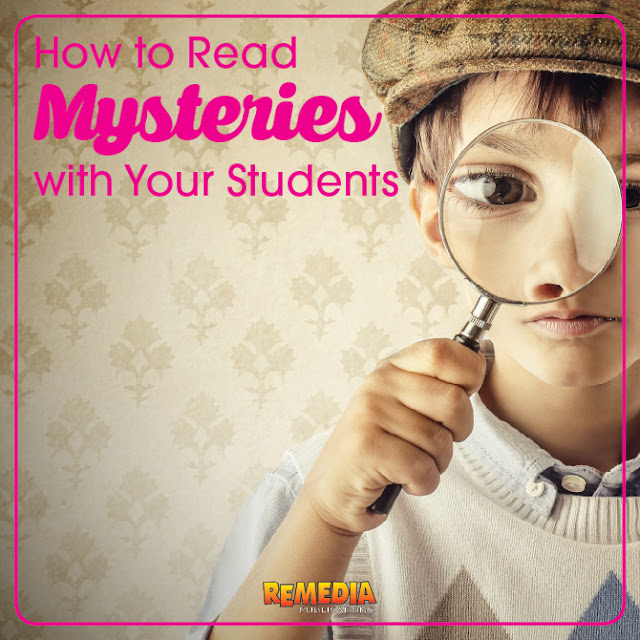PART 2: How to Read Mysteries with Your Students
Use this mystery story <free download> from one of our Mini Mysteries books to practice the following steps.
- Predict: Have students review the title, the synopsis on the back of the book, the cover of the book, and the pictures within the story. Ask students to write down what they predict the mystery will be about.
- Read: You may want to read the mystery to your students to test their listening ability, or students may read the stories to test their own logic skills. A combination of both may prove to be the best approach.
Tip: If you hand out copies or post the story on your whiteboard, only give students small segments at a time so they don’t read ahead.
- Investigate: Ask students to listen for interesting facts and clues.
· If you’ve given students a copy of the mystery, then ask them to highlight facts that give clues. Or have students write down the clues and the paragraph or page number they are found on. Tip: At the end of the story, have students go back to their notes and label each clue. Was it a useful clue or a red herring?
· Have students write down or underline the names of possible suspects. As they continue to read, students can make notes next to each suspect: the suspect’s alibi, motives, evidence, etc.
It doesn't have to be a mystery! Use these steps to reading mysteries with your students via @remediapub #mysterygenre
{ Tweet This }
- Predict Again: If the story is short, split the mystery into segments by paragraphs or chapters, and pause to reflect and predict. At these breaks, ask students to write down or share their predictions with a partner. Encourage students to support their predictions with facts and clues. They can use the clues they wrote down in #3.
- Conclude: At the end of the mystery, challenge to them to analyze their logic.
· Ask students to reflect and analyze whether their predictions were correct. When were they correct? Did they follow the right clues? What did they miss?
· You can also try finishing the story early before the mystery is solved. Leave students in suspense. Ask them if they know who the assailant is before it is revealed in the story. This gives students one last bit of practice with making inferences and using logic. They’ve been given all the clues. Can they put the puzzle together? Tip: Remedia’s mysteries finish without necessarily revealing the end of the whodunit. For example a mystery might end by saying, “Think about it…the detective knows who stole the purse. Do you?” Prepare students for reading mystery novels, making predictions, and using logic with our Mini Mysteries.
Stock-Up Your Classroom with High-Interest/Low-Readability Mysteries from Remedia!
{Shop Remedia's Mystery Materials}

